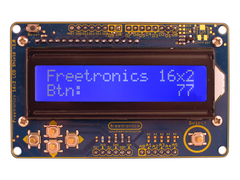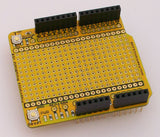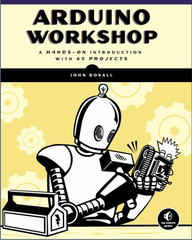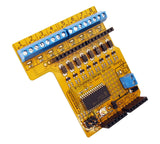After being given a previous example of an Arduino-based calculator, Instructables member Kale_3d took the challenge to rebuild and reprogram the calculator into a newer and more powerful version. And it has been a success, with a neat enclosure it's quite workable and the programming experience helps the end user learn about Arduino and coding in general.
Apart from simple functions the calculator also has trigonometric, and although the keypad used only has sixteen buttons a clever menu system is used to select the required operation. This is a fun project for the coding and calculator enthusiasts, and a quick demonstration is shown in the following video:
For complete details visit the project Instructable page. And for more, we're on facebook, Google+, and twitter - so follow us for news and product updates as well.
Looking for a rapid-use LCD for your Arduino or compatible projects? Save time and move forward with the Freetronics LCD & Keypad shield which contains a bright 16x2 character LCD and five buttons that can be read from only one analog input pin:




















